Digital marketing is an essential factor for the success of small businesses. It doesn’t matter what kind of products or services you are offering, your online presence is key. Marketing (yes, digital marketing as well) requires time and resources. I know that small businesses are often short on these. But they shouldn’t give up on all the great results digital marketing can bring.
So in this article, we’ll have a look at some of the biggest digital marketing challenges small businesses face from time to time and how they can work around them.
1. Explaining who your target customers are
Is your product or service good for everyone? Are you really trying to sell to everybody? I’m afraid you cannot leave it that way. You need to target your potential customers carefully.
I’m sure that in some of you the following question may arise: Why is it necessary at all? Well, I have a very simple answer to that. Otherwise, it’s not possible to elicit some reaction from people because there is so much marketing noise. If the reader does not feel that the ad calls out to him/her, he won’t click, he won’t go to your store, he is not going to purchase anything in your webshop. Describing your target audience (or potential buyers) is step zero when it comes to online marketing. It might not be the most exciting task but it is essential for the success of your business.
Yes, we can safely name your target audience potential customers. They are the ones you want to attract to your website, your webshop, or physical store with a special offer. They are the people you want to sell your stuff to.
But how to define your target audience? As a first step, it’s very important to write down the characteristics of the people you don’t want to sell to. Remember, there is no product or service that is good for everyone.
Just to give you an example: our agency does not want to target businesses who think that search engine optimization or digital marketing, in general, is unnecessary and they absolutely don’t need it. We don’t strive for convincing people of the benefits of SEO as an online marketing tool.
Once you know who doesn’t belong to your target audience, you can list the characteristics that are very specific to the potential buyers you want to reach later:
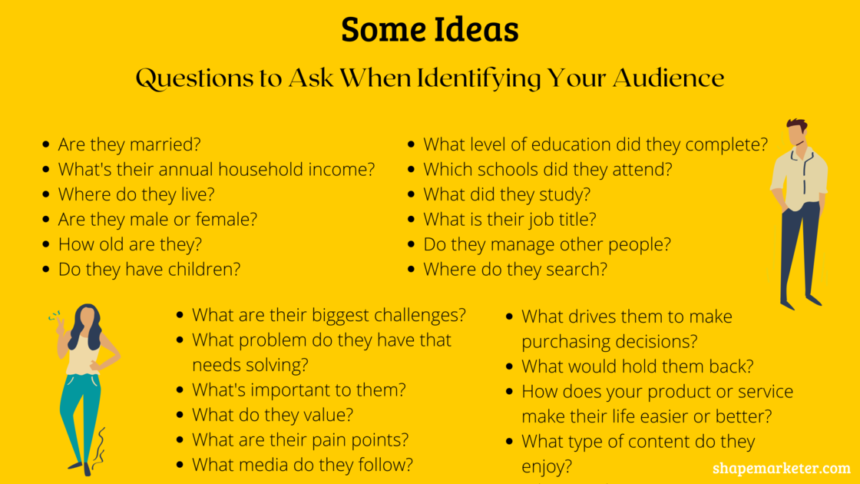
If you know all of these characteristics, you will be able to provide a real solution to their problem.
More often than not, people think that customer acquisition starts with ads, a new website, or an irresistible offer. Anyone who thinks the same way will ‘gain’ experience by wasting their own money. Believe me, I’m speaking from experience. I’ve already made the mistake of creating an advertising campaign quickly, without determining who I really want to sell my services to. I closed the campaign with literally zero results. It was an annoying and painful lesson.
But by getting to know your target audience, you can make your services more relevant to people and they will easily identify with your business. When the moment comes to make the decision to purchase, it will be just natural for them to turn to you instead of your competitors. After all, you gave them useful information and have won their trust.
If you’re a B2B company, you might find yourself in a more difficult position. However, you only have to approach this task from a different perspective. In this case, it is not the business itself that will buy something from you. It is the decision-maker in the company that must be approached. What are the characteristics of the person who makes the final choice? How can you convince him to pick your business? Look at things from this angle here and everything will be much more effective.
Solution: So how to collect all this information?
Make a list of your ‘best customers’ and send them a survey. Ask those questions that help you describe your target audience. Make sure your questions are short and easy to answer. You may also use Google Analytics to find plenty of useful data about your website’s visitors.
2. Finding your unique selling proposition
Today, it is becoming increasingly important for businesses to reach their target audience as effectively as possible. The market, and mainly the online market, is expanding and growing at an unprecedented rate, intensifying the competition between rival companies. An ordinary website with some info and phone numbers is far from enough. Also, an ordinary business is not enough. If you want to keep up, you need to build your online presence and digital marketing much more consciously.
USP is an abbreviation of the term “unique selling proposition”. The USP is what helps you stand out from the crowd and it shows your customers what is so special about you. You probably know by now that consumers are bombarded with hundreds of messages every day. Of course, they cannot compare all the products and services every time they have to buy something.
To make their lives easier, buyers usually group products and services into specific categories such as the safest car, the fastest car, the best value for a car, etc.
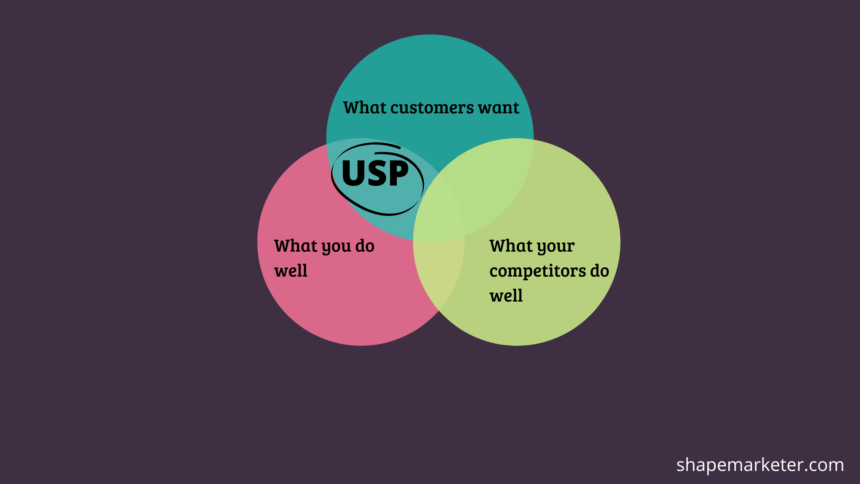
Let’s see an example from the homeland of digital marketing: the US. The Domino’s Pizza’s USP is to bring fresh pizza to your door within 30 minutes. If they cannot fulfill it, you get your pizza for free. The company is not in an easy position. There are plenty of fast-food restaurants delivering pizza in the United States. However, they are different from all the other competitors because they have a 30-minute guarantee from the time an order is placed.
We often hear that consumers are being bombarded with a ton of messages every day. However, they cannot compare all products or services every time they have to buy something. To make their own business easier, people usually categorize products and services into specific categories as I have mentioned earlier.
Your USP has to be the foundation of your digital marketing strategy. Whether you’re planning a website, a logo, or a campaign, always communicate clearly the benefits you offer. And remember that building your USP begins with understanding your target audience.
Solution: How to find your USP?
First, make a list of all the details you know about your target audience. Then you will need a list of all the needs your product/service can meet – these are your selling points. You should also sit down with your team members and collect everything your business is really good at (e.g. fast service, 24/7 customer service, etc). Analyze your competitors and eliminate all selling points from your list that are already offered by them as well. If you find the gap, you will probably stumble upon your USP. Build your USP into your digital marketing strategy as well.
3. Understanding the basics of search engine optimization
Many companies think that SEO is too complicated for them and not worth the effort. But no matter what type of business you have, if you have a website, SEO is important. Whether your business is new or old, small or large, you need to utilize it to have a really successful online presence.
The essence of search engine optimization is to make our website rank higher and higher in Google’s organic search results when one enters certain keywords and search terms. With search engine optimization, we practically want to increase our website’s traffic. The more people we can reach, the better the chances of orders or purchases. Or we can just ‘simply’ increase the number of people who regularly read our blogs. Overall, the goal depends on your digital marketing strategy.
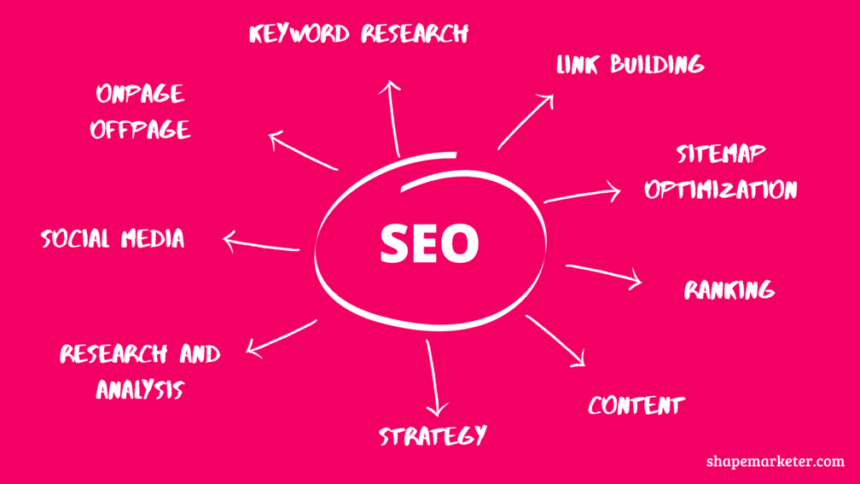
Unfortunately, most start-ups do not quite understand how to take care of SEO. There are just so many things to deal with as an entrepreneur. And simply there is not enough time to keep an eye on SEO which is – let’s confess – quite time-consuming.
Many think that having a fabulous website is a safe place.. Surely this is not the case. You need visitors to your website who will become your future customers. No matter how nice the website is. If no one finds it, there will be no revenue. It’s just like in the case of a physical store. If you start an offline backstreet business but do not advertise it, despite the glittering set and plenty of merchandise, almost no one will see it or enter your door.
Search engine optimization is a tool for attracting visitors and increasing your website’s traffic. You cannot just bypass the whole process.
What is the solution to this digital marketing challenge?
I can only recommend to all SMEs to go a little deeper into it. You have to see every aspect of your business and it doesn’t hurt to understand a little bit about search engine optimization as well. Once you recognize its importance and basics, you can make decisions more easily.
Of course, you can outsource it as well. Though this is an extra cost, look at it more as an investment. Achieving more traffic will result in higher profits. However, even if you hire an agency or freelancer, make sure they explain the basics of SEO to you.
4. Creating educational content
Content marketing is an essential part of your overall digital marketing strategy. It’s not surprising that sales per se are not sufficient anymore. Apart from that, you have to inform, educate, and entertain your potential customers.
I know exactly that choosing the right topic for an article is way more complex than it might seem to be. And before writing, you have to do a lot of research on the subject. Not to mention that a really good blog post will take you at least three hours to write.
Still, you cannot give up on content marketing. It is an excellent tool to reach out to the target audience on a regular basis. And the most wonderful thing about it is that it can be easily integrated into other marketing activities such as search engine optimization, social media, or email marketing. Don’t let this digital marketing challenge beat you.
The goal of content marketing is to grab and retain customers with a continuously produced value and content that needs to be tailored to the changing needs of your audience. As a result, your audience will remain loyal and will recognize your expertise on the subject. This is a pretty good foundation for future sales, isn’t it?
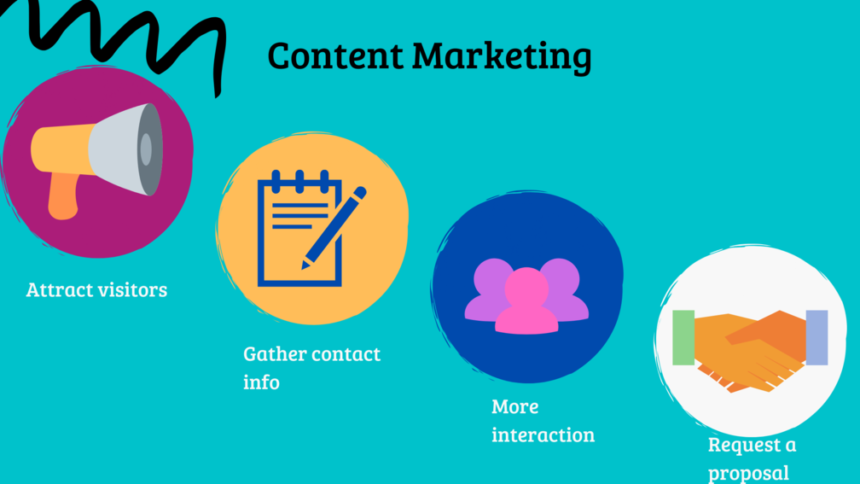
What is the solution in the case of content writing?
If you think that you totally have no time to sit down and write blog posts twice a week, do the following: create 3-4 extremely well-written, relatively long blog posts that address your target audience, provide value and educate your customers. These blog posts then can be utilized for Facebook ads, leads generation, or attracting website traffic. Make sure that it is You who writes these posts. You’re the expert of your business, and you’re the one who knows what your clients want. Make sure you do not outsource this task. You have to understand the significance of content marketing and good blog posts. But please remember that this is the absolute minimum you have to do. If you have just a little bit more time, try to create at least 1 blog post per week.
5. Knowing where to start your online marketing strategy
The most common problem businesses face is the lack of a complex, measurable digital marketing strategy. Without it even the best advertising campaigns will fail to support the business goals set by the company.
Basically, a digital marketing strategy means a mix of the following goals:
⦁ Attract new customers with online tools
⦁ To generate more valuable leads
⦁ To decrease conversion costs
⦁ To increase the loyalty of existing customers
⦁ To increase purchase value and/or purchase frequency.
In the strategy, you need to determine your starting point as well as what you want to reach using the right online tools. For instance, if you want to acquire new customers, you first need to identify your potential target groups (or target audience) and create a very good, irresistible offer to them. After that, you can target them as accurately as possible with different campaigns.
Solution – How to build a digital marketing strategy as a small business?
Building a digital marketing strategy is a very complex process. You have to clearly synchronize everything from web design to content marketing. Not to mention social media marketing and the clients you have to deal with at the same time! It is time-consuming, requires constant monitoring and modifications.
Well, as David Allen once said, ‘You can do anything but not everything’. As a first step, you have to determine what goal you want to accomplish (e.g. more leads, more sales, brand recognition). Don’t forget about your target audience either!
It’s important to understand how a digital marketing sales funnel works. It’s basically made up of all the steps you potential buyers move through until they get to the point of purchasing. You have to create your content, social media marketing, and really everything else according to each step in the funnel.
Now you can start planning your tactics to reach your goals. These may include lead magnets or working with social media influencers. Then send relevant marketing messages to your potential customers.
Creating a marketing strategy does not happen overnight so get ready. If you want to outsource it, get in touch with us to see how we can help you.
6. Local optimization
Slowly, more and more entrepreneurs are recognizing the benefits of local SEO. Standing out from many lookalike businesses is not easy at all, but with a few tips, it is totally possible!
As more and more positions are taken away in the SERP by paid ads and the advertising businesses are not resting, you need to find tactics that can help you stay one step ahead. What a digital marketing challenge!
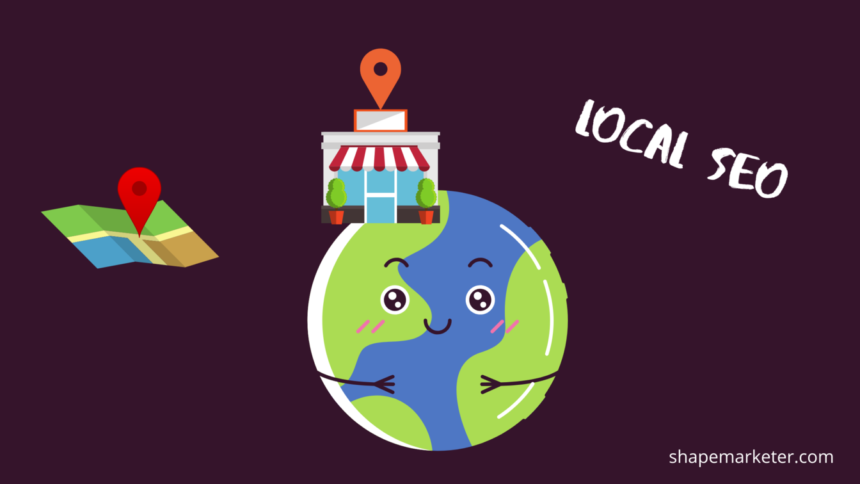
So what’s the solution here?
Google My Business registration is a must for any business. Filling it with accurate data and its continuous updating proves to Google that yours is an active business, providing users with accurate information on a daily basis.
This can be a huge advantage: for example when you arrive in an unknown city, you usually look for a nearby cafe, restaurant, service, florist, etc.
Each of your stores should have a separate sub-page (of course, this can only be done to a certain point), and on these sub-pages, you should indicate positive customer reviews about that business location.
When it comes to content, try to use strongly locally focused keywords and often refer to local terms. Make sure your contact information (address, email, phone number) is visible on every page of your website. Of course, you’ll also need a separate ‘Contact us’ page but the basic information should appear on each page of your website.
And one last thing: use Google Maps. If a prospective customer wants to find your business, the fastest way to do so is to search for your address on the map. However, if you embed the map on your website and mark your business on it, you will save them this step. If you have more than one store, place the address of that store on the map for each sub-page.
7. Measuring the direct impacts of your campaigns, dealing with overwhelming data
The most wonderful feature of online marketing is that it’s measurable.
With a well-structured analytics system, you can see and analyze exactly which digital marketing efforts are delivering the expected results and which are the ones that only waste your money. However, in order to make a correct assessment, one must first define the goals and then define how to measure their achievement, as accurately as possible.
As a small business, again, it is far from the easiest tasks. Not because measuring the results would be so incredibly difficult, rather because it takes time to understand thoroughly what data you need to look at. Also, you have to see the interconnections between your efforts and the data provided. Not to mention the fact that the new data always need to be compared with that of the previous month.
So what is the solution to this digital marketing challenge?
I would strongly recommend to all business owners to get familiarized with Google Analytics. I know that there are tons of data there but you have to learn which factors matter the most to you. And it is extremely important to set up proper goal completions.
Closing thoughts
The big question is whether a small business should outsource or not. Well, if you are running a business, you need to focus on improving your products, services, you have to work on your USP, you have to take care of employees. Probably you will not have the time to focus on Search Engine Optimization, proper social media, or content marketing.
You can of course hire a marketing expert but again it takes time. A lot. You have to post vacancies, interview candidates, provide the right equipment and resources, pay wages and benefits, manage days off. So probably it is better to outsource. Mainly at the beginning.
You will get high-quality results while you can focus on your customers and their needs. And it is always beneficial to have an outside perspective on your business. If you think your budget is extremely tight, at least book some consultations with a digital marketing agency/expert so they can direct you toward the right channels.
I truly hope I could assist you with some of the challenges small businesses have to deal with in the field of digital marketing. If you need help, just send a message to info@shapemarketer.com.
Good luck and I wish you plenty of Customers 🙂
FREE SEO Checklist
We have a free SEO material that you may download from our website, just click on the icon. This is a 45-point SEO checklist you can follow step-by-step to improve your website’s visibility in Google.
Mini Website Audit
If you want to know how to improve your website and attract more customers, you may want to have a look at our Mini Website Audit service. This is a low-cost service, specifically developed for SMEs with a tight budget.

